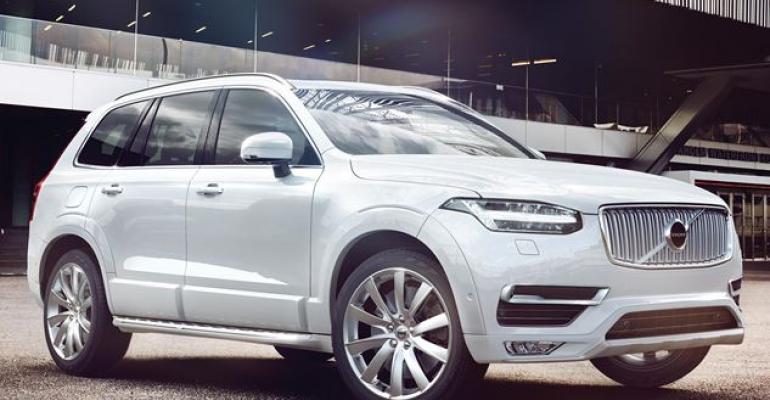MUMBAI – Volvo’s sales goals in India are nothing if not ambitious. Whether they are attainable in a market equally coveted by other high-end automakers remains to be seen.
Volvo last year offered 10 variants of five models ranging in price from Rs4 million ($65,000) to Rs8.4 million ($135,000) before local taxes ranging from 10% to 15% and a 167% import duty. Sales totaled 1,202 units in 2014, the first year in Volvo’s seven years in the Indian market in which deliveries exceeded four figures.
The Swedish automaker is launching three new models this year as it aims for more than 2,000 deliveries, an increase of more than 60%.
“We aim at a 15% (luxury-car) market share in India by 2020, selling 20,000 cars,” Managing Director Tomas Ernberg says. Expanding the product portfolio and the current network of 20 dealers are keys to hitting that target, he says.
Chinese automaker Zhejiang Geely, which bought Volvo from Ford in 2010, has global ambitions for what now is a minor player, having sold only 465,866 units worldwide in 2014.
But Volvo’s objective of 20,000 annual sales in India by 2020 is the same target set by larger luxury rivals Audi, BMW and Mercedes – and they hope to reach those goals by 2018.
Volvo does not rely on advertising or other traditional marketing methods to create brand awareness. It reaches out to luxury-vehicle buyers through events such as the Volvo Golf Challenge held in 26 countries. It organizes and participates in fashion weeks and parades, and exposes affluent individuals to its products by providing shuttle services at hotels, airports and conventions.
Lacking the capacity to launch several new models every year, Volvo also relies on its small, fuel-efficient yet powerful engines and around-the-clock service to attract customers.
Luxury light-vehicle sales in India increased 16.7% to 36,284 in 2014, according to WardsAuto data. The total does not include deliveries of 200 or so super-exotic brands such as Aston Martin, BMW-owned Rolls-Royce, Fiat Chrysler Automobiles’ Ferrari and Maserati, or Volkswagen’s Bentley, Bugatti and Lamborghini.
Those and other brands imported into India as completely built-up units – including Volvo – are subject to a 167% duty.
Prices before taxes range as high as Rs80 million ($1.3 million) for a Rolls-Royce Phantom, but VW soon will introduce the Rs160 million ($2.6 million) Bugatti Veyron Grand Sport.
About a dozen luxury automakers, including some manufacturers of the super-exotics, import kits or subassemblies at duties of 40% to 60% and assemble them locally in wholly owned, shared or rented plants. Prices for these models start at about Rs5 million ($81,000).
Audi, BMW and Mercedes-Benz carved out new market segments in India by introducing luxury compact hatchbacks, MPVs and SUVs. Tata-owned JLR entered this group later and the latest automaker to join these pioneers is Volvo.





